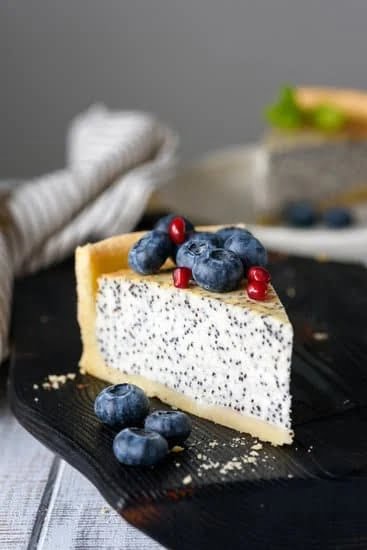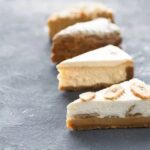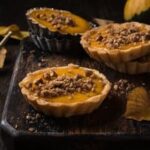How do you decorate a cake with frosting? It’s a question that has captivated bakers, food enthusiasts, and dessert lovers for generations. The art of cake decoration with frosting is not only visually stunning but also adds a delectable layer of flavor to every slice. Whether it’s a simple swirl of buttercream or an intricate design crafted with fondant, frosting has the power to transform a plain cake into a masterpiece.
Cake decoration has soared in popularity over the years, thanks to its ability to elevate any occasion – from birthday parties to weddings. The right frosting can turn a homemade cake into a work of art that captures the theme and essence of the event. From whimsical designs for kids’ birthdays to elegant creations for formal celebrations, cake decorating allows bakers to unleash their creativity and imagination.
Different types of frosting play pivotal roles in this process. Buttercream frosting provides a creamy and smooth texture, making it versatile for various decorating styles. Cream cheese brings a tangy richness to the mix, while whipped cream offers lightness and fluffiness. Fondant, on the other hand, provides a sleek canvas that allows intricate designs and decorations to shine through. Each type of frosting adds its own unique touch to the final creation.
In this article, we will explore the world of cake decoration with frosting in detail. Starting with an understanding of the different types of frostings commonly used in cake decoration, we will delve into various techniques and tips for achieving professional-looking results.
From preparing the cake layers properly to troubleshooting common challenges, we’ll cover everything you need to know to create stunning frosted cakes that are both beautiful and delicious. So let’s dive into the sweet art of decorating cakes with frosting.
Understanding the Basics
Types of Frosting for Cake Decoration
When it comes to decorating a cake with frosting, understanding the different types of frostings available is essential. Each type has its unique characteristics that can contribute to the overall appearance and taste of the cake. Here is an overview of the four most commonly used frostings in cake decoration: buttercream, cream cheese, whipped cream, and fondant.
Buttercream Frosting
One of the most popular frostings for cake decoration is buttercream. It is made from a mixture of butter, sugar, and flavorings such as vanilla extract. Buttercream frosting is easy to work with and versatile, making it suitable for various designs. It can be piped into decorative shapes or spread smoothly on the cake surface for a sleek finish.
Cream Cheese Frosting
Cream cheese frosting offers a slightly tangy and rich flavor that pairs well with many cake flavors like carrot or red velvet. It is made by combining cream cheese, butter, powdered sugar, and vanilla extract. Cream cheese frosting tends to be softer than buttercream, making it ideal for creating textured designs on cakes like rosettes or ruffles.
Whipped Cream Frosting
Whipped cream frosting is light and fluffy, providing a refreshing complement to cakes. It is made by whipping heavy cream with sugar and vanilla extract until stiff peaks form. Whipped cream frosting should be used immediately after preparation since it can lose its stability over time. It works well for creating soft swirls on top of cakes or as a filling between layers.
Fondant Frosting
Fondant is a pliable icing that allows you to create smooth finishes and intricate designs on cakes. It consists of gelatin, glycerin, water, powdered sugar, and options for added flavors like almond or vanilla extract. Fondant can be rolled out and draped over the cake, providing a clean canvas for decorations such as molded figures or detailed patterns.
Understanding the characteristics of each frosting type is crucial for selecting the right one based on your desired decoration style and taste preferences. In the next section, we will explore when and how to use these frostings effectively to enhance the appearance of your cake.
Preparing the Cake for Decoration
Once you have baked your cake layers to perfection, it’s time to prepare them for decoration. This crucial step ensures that your cake not only looks visually appealing but also provides a stable base for the frosting. Here are some tips on how to prepare your cake layers before diving into the decorating process.
First and foremost, it is important to allow your cake layers to cool completely before handling them. If you try to frost a warm cake, the heat will melt the frosting and cause it to slide off. To speed up the cooling process, you can place the cakes on wire racks or even pop them in the refrigerator for a short while.
Next, it’s essential to level each cake layer so that they are even and flat. Uneven layers can make stacking difficult and result in an unstable final product. A leveled surface will provide stability and make it easier for you to create evenly frosted layers. You can use a serrated knife or a cake leveler specially designed for this purpose.
Once your cake layers are leveled, it’s time to stack them using a stable base. Start with a smooth, sturdy surface such as a cardboard round or a cake board. Apply a small amount of frosting on the center of the board to act as glue and prevent the cake from sliding around. Place your first layer of cake on top of the board and apply a thin layer of frosting on top using an offset spatula.
To ensure that all subsequent layers are aligned correctly, gently press down on each layer as you stack them. This will help eliminate air pockets and create an even foundation for your frosting.
After stacking your layers, it is essential to crumb coat your cake before applying the final layer of frosting. A crumb coat is a thin layer of frosting that seals in any loose crumbs and provides a smooth base for the final design. Simply apply a thin layer of frosting all over the stacked cake and smooth it out using a spatula or a bench scraper.
By following these steps to prepare your cake layers, you can ensure a stable foundation for your decoration process and create a visually stunning cake that will impress your friends and family.
| Tips for Preparing the Cake | Benefits/Importance |
|---|---|
| Allow the cake layers to cool completely before handling them. | Prevents frosting from melting and sliding off the cake. |
| Level each cake layer to make them even and flat. | Creates a stable base for stacking and frosting layers evenly. |
| Use a sturdy base such as a cardboard round or a cake board to stack the layers. | Provides stability and prevents the cake from shifting or sliding during decoration. |
| Apply a thin crumb coat of frosting on top of the stacked cakes. | Seals in loose crumbs and creates a smooth surface for final frosting design. |
Mastering Basic Frosting Techniques
Step-by-Step Guide on Layering Frosting
Now that you have prepared your cake and it is ready to be decorated, mastering the basic frosting techniques is essential. The first step is to layer the frosting evenly on the cake. Begin by placing a dollop of frosting on top of the first cake layer and spread it out using an offset spatula or a butter knife. Make sure to cover the entire surface of the cake layer with a thin layer of frosting.
Once the first layer is complete, place the second cake layer on top and repeat the process until all layers are stacked. Remember to align each subsequent layer carefully so that they are centered and even. This will ensure a stable base for your frosting and prevent any shifting or unevenness in your final design.
Achieving a Smooth Finish with Buttercream or Cream Cheese Frosting
Buttercream and cream cheese frostings are popular choices due to their versatility and delicious taste. To achieve a smooth finish with these frostings, start by applying a crumb coat. A crumb coat is a thin layer of frosting that seals in any loose crumbs, creating a smooth surface for the final coating of frosting.
After applying the crumb coat, refrigerate the cake for about 15 minutes to allow it to set. This will make it easier to spread a final layer of frosting smoothly without pulling off any crumbs from the cake layers. Once chilled, apply another even layer of frosting over the crumb coat, making sure to fill in any gaps between layers and covering all visible areas.
Creating Textured Designs with Whipped Cream Frosting
Whipped cream frosting adds an airy, light texture to cakes and can be used to create beautiful and delicate designs. To begin, ensure that your whipped cream is well-chilled before decorating your cake. You can do this by chilling both the mixing bowl and whisk attachment in the refrigerator beforehand.
Once your whipped cream is ready, you can use a piping bag fitted with various tips to create different designs on your cake. Consider using a star tip for rosettes or shells, or a petal tip for ruffles. Simply apply gentle pressure to the piping bag while moving it in steady motions to form your desired design.
Remember that whipped cream frosting should be refrigerated until serving time as it can become unstable when exposed to warm temperatures. By following these basic frosting techniques, you will be well on your way to creating beautifully decorated cakes that are sure to impress.
Exploring Advanced Frosting Techniques
When it comes to cake decoration, mastering advanced frosting techniques can take your creations to the next level. These techniques allow you to achieve intricate designs and add dimension to your cakes. In this section, we will explore step-by-step instructions on how to achieve these advanced frosting techniques using buttercream, cream cheese, or whipped cream frostings.
To begin, let’s delve into achieving intricate piping designs with buttercream frosting. Piping is the art of using a piping bag and different nozzles to create decorative patterns on your cake. Start by filling a piping bag fitted with your desired nozzle with buttercream frosting.
Hold the piping bag at a 90-degree angle above the cake and apply gentle pressure as you guide the nozzle along your desired path. With practice, you can create stunning flowers, borders, or even lettering.
Next, let’s discuss how cream cheese or whipped cream frostings can be used to add dimension to your cake design. Cream cheese frosting is smooth and velvety, making it perfect for creating rosettes and ruffles on your cake. To create rosettes, use a star-shaped nozzle and pipe small swirls in a circular motion. For ruffles, use a petal tip nozzle and create vertical lines that resemble fabric folds.
Whipped cream frosting can be used to achieve light and airy textures in your cake design. It is ideal for creating delicate borders or filling in intricate designs with its soft consistency. Simply fill a piping bag fitted with your desired nozzle with whipped cream frosting and apply gentle pressure as you pipe along the edges or fill in spaces.
Remember that practicing these advanced frosting techniques may take time and patience. Start by experimenting on a spare piece of parchment paper before attempting them on your actual cake. With practice, you’ll gain confidence and skill in using these techniques to elevate your cake decorations.
By exploring these advanced frosting techniques, you can take your cake decoration skills to new heights. From intricate piping designs to adding dimension with rosettes and ruffles, these techniques allow you to create visually stunning cakes that will impress any audience. In the next section, we will further enhance our cake design knowledge by exploring the use of fondant in decorating cakes.
Enhancing the Cake’s Appearance with Fondant
Fondant is a versatile and popular frosting option that can take your cake decoration to the next level. It provides a sleek and smooth finish, making it perfect for creating elegant designs and intricate patterns on cakes. In this section, we will explore the basics of working with fondant, including how to cover a cake with fondant and create beautiful decorations.
To begin, you will need to make sure your cake is properly prepared for fondant application. Start by leveling the cake layers to create an even surface. Then, apply a thin layer of buttercream or ganache as a crumb coat. This will help the fondant adhere smoothly to the cake and prevent any crumbs from showing through.
Next, lightly dust your work surface with powdered sugar or cornstarch to prevent the fondant from sticking. Roll out the fondant into a thin, even sheet using a rolling pin. Make sure it is large enough to cover the entire cake.
Carefully lift the rolled-out fondant sheet and drape it over the cake. Gently smooth it down starting from the top center and working your way down the sides using your hands or a fondant smoother tool. Be sure to press out any air bubbles as you go along.
Once the fondant is covering the entire cake, trim off any excess using a sharp knife or pizza cutter. Smooth out any imperfections or wrinkles by gently rubbing them with your fingers or using a fondant smoother.
Now that you have covered your cake in fondant, you can enhance its appearance with various decorations. Fondant allows for endless creative possibilities – you can use it to sculpt figures, create flowers, make patterns, or even paint on designs with edible coloring.
To create decorative elements such as flowers or figures, knead some additional fondant until it becomes pliable and easy to work with. Use food coloring gels to achieve different shades if desired. Then, shape and mold the fondant into desired shapes and let them dry before placing them on the cake.
Another technique that can be used with fondant is embossing or imprinting designs onto it. You can use special rolling pins or textured mats to create intricate patterns or imprints on the fondant surface. This adds a touch of elegance and detail to your cake design.
By using fondant, you have the opportunity to elevate your cake decoration and create stunning designs that will impress your guests. It may take some practice to perfect your skills, but with patience and creativity, you can achieve beautiful results. So, let your imagination run wild and experiment with different fondant techniques to make your cakes truly unforgettable.
| Fondant Cake Decoration | Tips |
|---|---|
| Basic preparation steps | – Level cake layers
|
| Creating fondant decorations | – Knead additional fondant until pliable
|
| Embossing/imprinting designs | – Use special rolling pins or textured mats for intricate patterns
|
Using Food Coloring and Edible Decorations
Adding vibrant colors and decorative elements to your cake can take it to the next level of visual appeal. Using food coloring and edible decorations allows you to customize your design and make it truly unique. Here are some tips on how to use these elements effectively in your cake decoration.
When it comes to coloring your frosting, gel or powdered food coloring is recommended over liquid food coloring. Gel or powdered food coloring produces more concentrated and vibrant shades, allowing you to achieve the desired color without altering the consistency of the frosting. Start with a small amount of food coloring and gradually add more until you reach the desired hue.
To incorporate edible decorations into your design, consider using sprinkles, edible pearls, or sugar flowers. Sprinkles come in various shapes, sizes, and colors, making them a versatile choice for adding texture or accents. Edible pearls can be used to create elegant borders or scattered throughout the design for a touch of sophistication. Sugar flowers add a whimsical and decorative element to cakes and can be purchased premade or made from fondant.
When using edible decorations, it’s important to consider their placement on the cake. Plan out your design before applying any decorations to ensure a cohesive look. Sprinkle them sparingly or strategically place them for maximum impact. Remember that less is often more when it comes to decorating with these elements; their purpose is to enhance the overall appearance of the cake without overwhelming it.
Incorporating food coloring and edible decorations allows you to unleash your creativity and truly make a statement with your cake decoration. Experiment with different color combinations, patterns, and designs to create visually stunning cakes that are sure to impress guests at any occasion.
Troubleshooting Common Cake Decoration Challenges
Decorating a cake with frosting can be a fun and rewarding experience, but it is not without its challenges. In this section, we will address some common cake decoration challenges and provide solutions to help you overcome them. Whether you’re dealing with air bubbles in frosting, uneven layers, or cracking fondant, we have you covered.
One common issue that many cake decorators face is the presence of air bubbles in their frosting. These pesky bubbles can create an uneven and unprofessional finish on your cake. To prevent air bubbles from forming, it is important to mix your frosting slowly and at a low speed to minimize air incorporation. You can also tap the filled piping bag gently on the counter to release any trapped air before applying the frosting.
Another challenge that may arise is achieving even layers when stacking your cake. Uneven layers can result in a lopsided or unstable structure. To ensure even layers, it is crucial to level each cake before stacking them. One technique is to use a long serrated knife or cake leveler to carefully trim off any domed tops. Additionally, consider using a turntable while assembling the layers to ensure accuracy and stability.
Cracking fondant is another issue that can occur during cake decoration. Fondant cracks are usually caused by dryness or improper handling of the fondant. To prevent cracking, make sure your fondant has enough moisture by kneading it until pliable before rolling it out. If you notice cracks appearing while covering the cake, you can smooth them out by gently smoothing with your fingers or using a fondant smoother tool.
By understanding these common challenges and knowing how to tackle them head-on, you will gain confidence in your cake decorating skills and achieve professional-looking results every time. Remember that practice makes perfect, so don’t get discouraged if things don’t turn out perfectly on your first try. Troubleshooting these issues is all part of the learning process, and with perseverance and creativity, you will be able to overcome any cake decoration challenge that comes your way.
Conclusion
In conclusion, cake decoration with frosting is not only a delicious art but also a way to express creativity and bring joy to others. By understanding the basics of different types of frostings, preparing the cake properly, and mastering various frosting techniques, anyone can create stunning and professional-looking cake designs. From simple buttercream swirls to intricate piping designs, the possibilities are endless.
The key to successful cake decoration lies in experimentation and exploration. There is no right or wrong way to decorate a cake with frosting – it all comes down to personal preference and imagination. Each cake becomes a canvas waiting for your unique touch. So let your creativity run wild as you experiment with different colors, textures, and techniques.
Remember that practice makes perfect. Don’t be discouraged if your first attempts at decorating cakes don’t turn out as planned. Troubleshooting common challenges is part of the learning process, and with time and practice, you will improve your skills. With each new creation, you’ll gain confidence and find joy in watching your frosting skills develop.
So go ahead, gather your favorite frostings, pick up some piping bags and nozzles, and start creating edible works of art. Whether it’s for birthdays, weddings, or just an afternoon treat, decorating cakes with frosting is sure to bring smiles and satisfaction to those who have the pleasure of indulging in your sweet creations. Let your imagination run wild as you embrace the art of cake decoration with frosting.
Frequently Asked Questions
How do you put frosting on a cake?
Putting frosting on a cake can be done in a few simple steps. Start by preparing your cake for frosting, ensuring it is cooled completely. Place the cake on a flat surface or turntable to make the process easier. Begin applying frosting to the top of the cake with an offset spatula or a butter knife, using smooth, even strokes.
Gradually work your way towards the edges, pushing excess frosting over them to create a slightly overflowing look. With the remaining frosting, apply it around the sides of the cake using long strokes from top to bottom until all visible areas are covered. To achieve a smooth finish, use a bench scraper or another straight-edged tool to scrape away any excess frosting and create sharp edges.
What is the easiest way to decorate a cake?
The easiest way to decorate a cake is by using pre-made decorations or simple techniques that do not require intricate designs or specialized tools. One straightforward approach is utilizing ready-made edible cake toppers or fondant cutouts that can easily be placed and attached onto the cake’s surface, instantly adding visual appeal without much effort.
Another option is sprinkling edible glitter, colorful sprinkles, or powdered sugar over the top of the frosted cake for an eye-catching finish. Additionally, piping simple patterns such as dots or lines with contrasting colored icing can enhance its appearance without requiring advanced skills.
How do you cover a cake with frosting?
Covering a cake with frosting involves several steps that result in an even layer of icing across its surface. Firstly, ensure that your cake has been cooled completely before attempting to frost it; otherwise, it may crumble or melt due to residual heat. Once you have prepared your preferred frosting recipe (buttercream, ganache, etc.) and chosen an appropriate spatula or icing tool, begin by placing a generous dollop of frosting onto the center of the cake’s top surface.
Gently spread the frosting outwards towards the edges using smooth strokes until it covers every part evenly while reaching down the sides. Gradually build up the frosting by adding more as needed to achieve the desired thickness and smoothness. Finally, use a clean spatula or scraper to remove any excess frosting and create a smooth finish around the cake’s sides.

Welcome to our cake decorating blog! My name is Destiny Flores, and I am the proud owner of a cake decorating business named Cake Karma. Our mission is to provide delicious, beautiful cakes for all occasions. We specialize in creating custom cakes that are tailored specifically to each customer’s individual needs and tastes.





